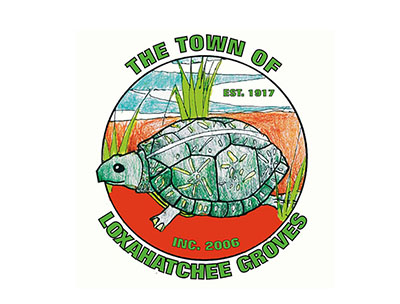Dr. Kim DeLaney, director of strategic development and policy for the Treasure Coast Regional Planning Council, gave a presentation to the Loxahatchee Groves Town Council on Wednesday, Sept. 8 regarding the possibility of consulting with the town on its plans for the future.
DeLaney noted that she has been talking with Town Manager Jamie Titcomb and Assistant Town Manager Francine Ramaglia about some of the issues the town faces.
“Jamie thought it would be a good idea to have a conversation with you about where you are and where you might want to go,” DeLaney said, explaining that the TCRPC is a public agency with 18 elected officials on the board from the four counties it covers and 10 gubernatorial appointees.
“We’re designed as an extension for local government staff and agency staff,” she said. “Many local governments don’t have the staff to get into details of things the way they’d like to with an onboard staff member, so we’re an extension of your staff.”
She said that TCRPC’s own work includes issues such as hurricane evacuation, emergency mitigation planning and homeland security.
“We work with land use, transportation, environmental preservation, natural systems, schools planning — anything that is more efficient to do on a larger scale or has some degree of specialty,” DeLaney said.
The agency has been working more lately on community blueprints.
“We have an opportunity in the planning process to really get into the details with communities,” she said. “Specifically, what are the things you want to accomplish? How can they be afforded? Can you bring your tax dollars home in the form of grant dollars or other funds to help pay for those things locally, or are there other funding sources you need to establish?”
The TCRPC’s work includes economic analysis and detailed implementation, she said, adding that transportation and roadways and “complete streets” has been a subject of discussion.
“That’s a scenario where we’ve spent a lot of time in neighboring communities, like the Indian Trail Improvement District,” DeLaney said. “Complete streets are kind of the modern way to think about roadways, so roads aren’t just for moving cars quickly from point A to point B, but there are other users. In your community, there’s people on bikes, there’s people on foot, there are equestrians, there will be transit service eventually on Okeechobee Blvd.”
She said there is a relationship between the roads and the land use along that roadway.
“We try to pay a lot of attention to how those relationships work well and how they may need to be improved,” DeLaney said, adding that road design is not a “one-size-fits-all” term. “Everything about transportation planning that’s done well is context sensitive.”
She said that the TCRPC tries to elevate community desires and how the community wants to look and feel, and what makes sense in that community, adding that she recently completed a mobility plan for ITID.
“We were asked by Indian Trail about two-and-a-half years ago to help them through a challenging conversation about a transportation network that would work in the community,” DeLaney said. “You may be familiar with some of the conversations that have gone on. Obviously, the land use patterns in and around ITID have changed a lot.”
She said that the TCRPC could help Loxahatchee Groves with grants to help fund roadway and other projects, coordinating with the Palm Beach Transportation Planning Agency and other agencies to get grants to move projects along, and come up with plans that would draw the attention of those agencies.
“The land use patterns in and around Indian Trail have changed a lot over the last 20 years, so the impacts from that land use have really changed how that roadway network has been used,” DeLaney said, adding that the TCRPC has been able to get matching grants and some full grants amounting to millions of dollars for roadway funding for ITID.
She added that the TCRPC charges for some services, such as grants writing, but also offers free services, such as reviews of town charters.








